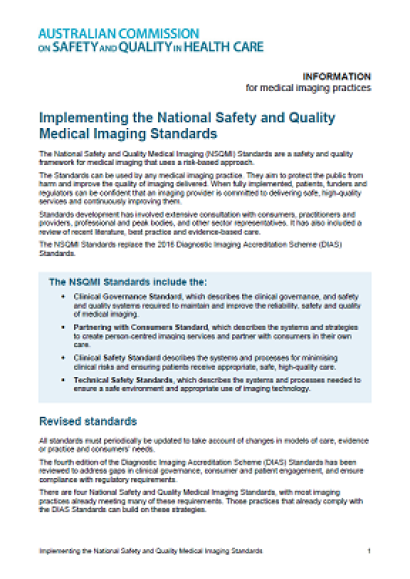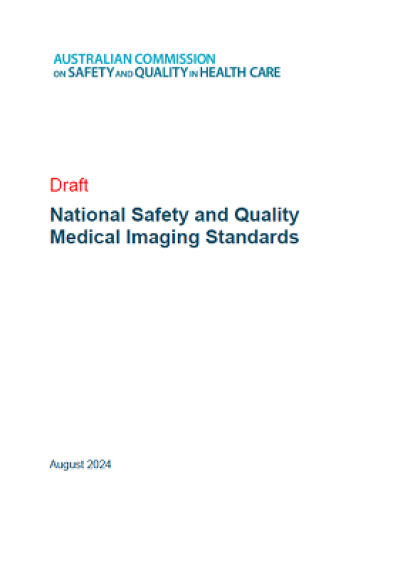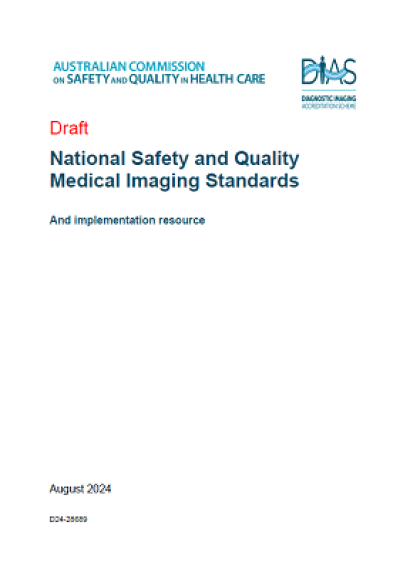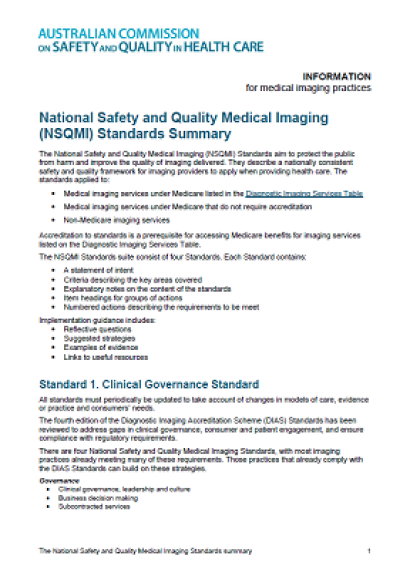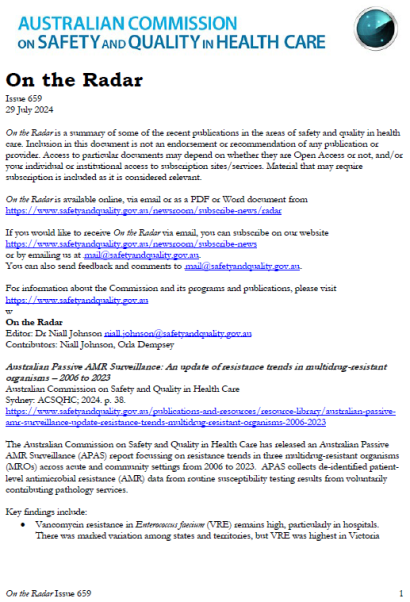The process used and combined the available data with the collective judgement of experts. Key steps included:
In 2016, the Commission developed the Prioritised list of clinical domains for clinical quality registry development.
The NSQMI fact sheet addresses frequently asked questions about the National Safety and Quality Medical Imaging (NSQMI) Standards and the Australian Safety and Quality Medical Imaging Accreditation (ASQMIA) Scheme that will accompany the NSQMI Standards.
The draft National Safety and Quality Medical Imaging (NSQMI) Standards details the actions and requirements for meeting the four NSQMI Standards.
The draft National Safety and Quality Medical Imaging (NSQMI) Standards and implementation resource details the actions and requirements for meeting the four NSQMI Standards. It includes a guide to assist imaging providers with implementing the NSQMI Standards.
The NSQMI Standards summary gives a high-level review of the draft National Safety and Quality Medical Imaging Standards and its 53 actions.
Australia required a standardised health IT-related incident classification system that provides a unified and consensus-based approach that can be readily applied during the EMM implementation process.
The Commission asked the Australian Institute of Health Innovation at Macquarie University to perform a literature review and environmental scan on approaches to the review and investigation of Health IT-related patient safety incidents to:
The review analyses evidence for the types of digital health interventions which have been shown to improve health care. It focuses on the safety and quality impact of five digital health interventions:
This issue includes items on antimicrobial resistance, digital health, oral health, sustainability, clinical deterioration, leadership and culture, infection prevention and control, COVID-19, and more. Also covered are the latest from BMJ Quality & Safety, Journal of Patient Safety, International Journal for Quality in Health Care, and The Joint Commission Journal on Quality and Patient Safety.

